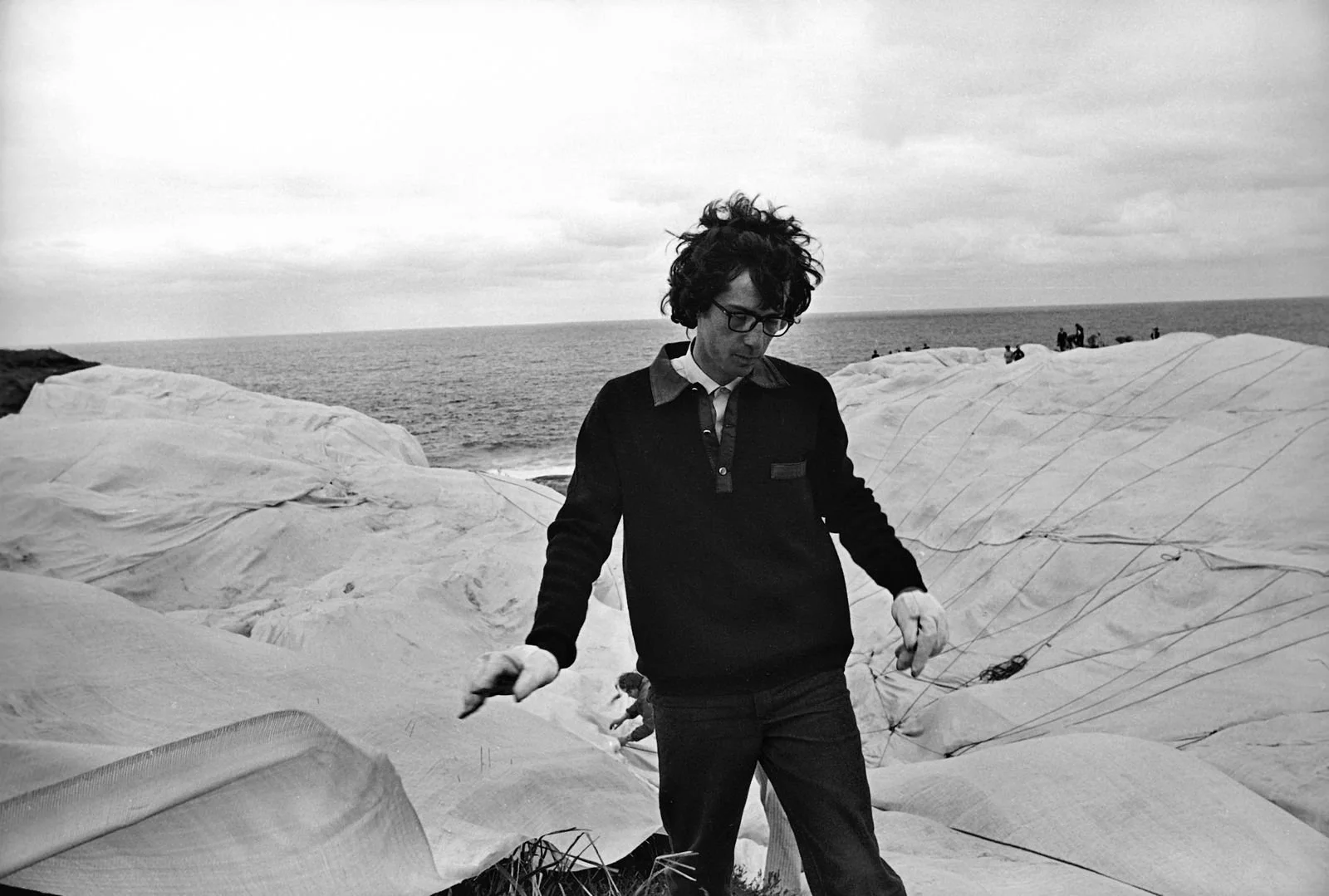When Australia’s Coast Disappeared Beneath Plastic: The Day Art Changed Forever
History was made on October 28, 1969, when the final sheets of plastic were secured over Sydney’s Little Bay, transforming an entire stretch of coastline into what was then the largest artwork ever created.
Artist Christo Vladimirov Javacheff.
Known as Wrapped Coast, the project covered 2.5 kilometres of the rugged headland in 100,000 square metres of pale, straw-coloured plastic fabric. The dramatic installation stretched from the cliff tops down to the crashing surf below, capturing the imagination of art lovers around the world.
The ambitious idea came from Bulgarian-born artist Christo Vladimirov Javacheff and his wife Jeanne-Claude Denat de Guillebon. The couple spent ten weeks on site directing a small army of art students, climbers, and volunteers who braved the sharp rocks and unpredictable weather to bring the vision to life.
To secure the enormous fabric sheets, workers used a specially designed gun to fire steel rivets into the cliffside, anchoring more than 56 kilometres of climbing rope. The work was exhausting and hazardous — several participants suffered ankle sprains, cuts, and even falls while maneuvering over hidden crevices and unstable terrain. One climber reportedly plunged five metres onto a ledge, escaping with cuts to his back.
The 2.5km clifftop in south-east Sydney being wrapped in plastic sheeting in October 1969.
While Wrapped Coast was hailed as a revolutionary environmental artwork that pushed creative boundaries, not everyone was impressed. Some local fishermen and swimmers complained that the installation disrupted access to their favourite coastal spots. Curious onlookers also caused delays, wandering across the site and getting too close to the workers.
Adding to the tension, a nearby rubbish tip caught fire during the project, briefly threatening to destroy the artwork before firefighters brought it under control.
Despite the challenges, Wrapped Coast became a landmark in contemporary art and put Australia on the global cultural map. It marked the first large-scale environmental installation by Christo and Jeanne-Claude, who would later go on to wrap famous monuments and landscapes around the world — from New York’s Central Park to Berlin’s Reichstag.
For ten short weeks in 1969, a piece of Sydney’s coastline disappeared beneath shimmering sheets of fabric, reminding the world that art could be as vast and untamed as nature itself.


